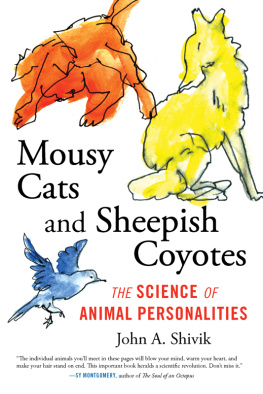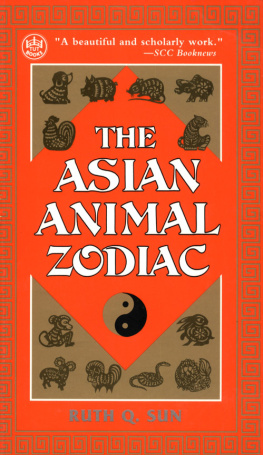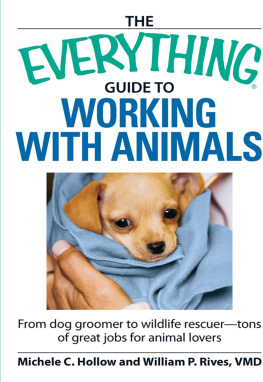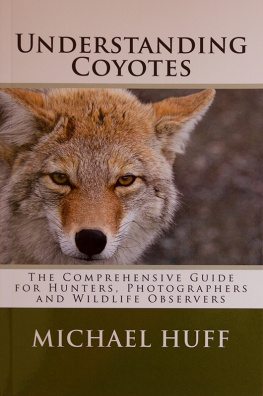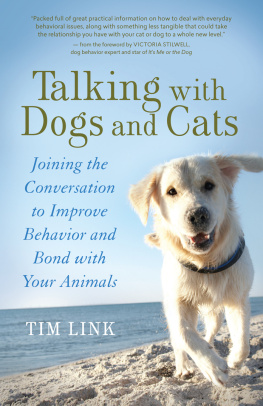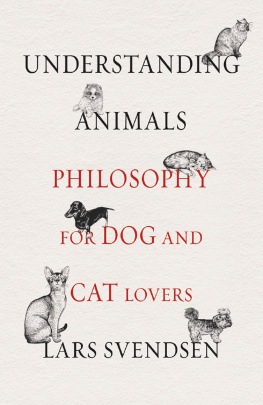
For Roberta and John Shivik Sr.,
who created the clan of individuals: Teresa, JoAnne,
Elizabeth, Michael, David, and myself
Always remember that
you are absolutely unique,
just like everyone else.
MARGARET MEAD

CHAPTER 1
My Cat and Dogma
M y cat, for all practical purposes, is an asshole.
To his credit, he had a bit of an uphill battle with me, and my opinion may not be entirely his fault. I have never been one to like cats. At an intellectual level, it doesnt make sense to bond with them. Compared to loyal and obsequious dogs, cats are so independent. Aloof. Sneaky. Selfish. Sanctimonious, even. Theyre little bastards that dont care about you or anyone else, or if they do, they want it only on their own terms. Completely conditional love. They expect, they demand. Finicky? Are you kidding me? I didnt get to choose my meals as a kid.
It is trite to write that cats are the counterpoint to dogs. It is a truism to conclude that there are dog people and cat people. But Ill note, if you havent figured this out already, that I grew up a dog person.
And then there is Pingino.
Pingino has been the herald of my triumphs as a father, the narrator of the death of my marriage. He has been the one annoying companion that has been with me through it all. He has tested the limits of his nine lives. An obnoxious vocalizer, his needy meow is tuned to the tone and key of fingernails on a chalkboard. He is a black and white tuxedo cat who was insensitively bequeathed to me while I was in my old life, when I often traveled to Spain.
He wasnt my chosen pet but rather the result of passive-aggressive miscommunication between my erstwhile wife and me. A confidant of hers at the time was moving, so it seemed the perfect solution for him and gift for me: a loud cat for a dog person. I was away on one of my work trips to Espaa, so perhaps it was more about noncommunication than miscommunication, but the indisputable fact was that a new, young cat was in the house. I arrived home jet-lagged, and he greeted me by attacking my toes.
Merrrrrreow, he said, haughtily.
Pinginos body is a portrait of inconsistency. Sitting, his haunches ooze to either side of his hips, and his butt is an order of magnitude larger than his head. He has the shape of an overweight penguin, pelage divided between no color and all colors at oncehence his name. He has both eyebrows, left and right, but the left is white and the right black. Against the sleekness of his fur, the long black hairs are invisible, and only the white ones show, so he appears as if he has only one eyebrow. Hes fat, loud, and lopsided. But he doesnt give a damn. Worse, he stares at me, judging, as if I look funny.
The cat has been with me for a decade now. He made the move from Logan, Utah, to Bishop, California, in 2010. There, he became a great killer of lizards and taunter of coyotes. The lord and master of the little mining-town shack where I lived with my family, Pingino was hell on the smaller species of wildlife in our dilapidated subdivision. As a wildlife biologist, I cringed as he rained death upon the birds and reptiles. The Wildlife Society position statement on free-range and feral cats is clear: Domestic cats have tremendous impacts on wildlife and are responsible for the extinction of numerous mammals, reptiles, and at least 33 bird species globally. Professional societies deplore the wanton destruction caused by domestic cats. Pingino was fixed and not feral, but he was an indoor-outdoor cat, and had a penchant for hunting in spite ofor adding tohis size. I installed bird feeders to supplement the local population and to assuage my guilt. The lizards did deliver some element of revenge, dulling his coat and slowing his progress by giving him parasitic worms, but the veterinarians sorted that out before we moved to Nevada City, California, after nine months in the Bishop hovel.
Pingino was housed temporarily with my former sister-in-law while we moved to Nevada City. He rejected the kindness of his benefactor and escaped from her palatial horse-property rambler on the outskirts of Los Angeles. As most cat owners likely know, drastic change can be particularly hard on cats, and Pingino acted out by making a break for it: he disappeared into the dry hills. Weeks after his escape, we were newly ensconced in a Nevada City rental five hundred miles away. We were certain that he was dead, a meal for the coyotes. Or so I thought when the phone rang. His Los Angeles chaperone was holding him near the phone.
Meow, he said, the annoying voice unmistakable. Pingino had cashed in a good two-thirds of his nine lives, but he was back, and a little put out by it. He seemed more annoyed to be submitting to domestication than about nearly losing his skin, but he incorporated the positives of Meow Mix and safety into his calculation and decided to come back. It was on his terms, after all.
The experiment of moving to Nevada City was a failure for our family too, and we had to leave there as well. On the verge of another move, I began to feel some sympathy for this cat. Cats are well known for being traumatized by change. Dogs are generally fine with moving from place to place, as long as they have you, their social group, with them. Cats require their stuff. When one moves a cat, it is best to not pack everything in the moving van but rather to bring familiar objects. Pooky the stuffed bear. A favorite rug or two ought to be brought along so that upon arriving in the new abode, the cat has an immediate sense of familiarity to soften the transition.
It was the third move in as many years. This time, however, only my son and I were headed back to our old house, the family unit torn asunder. Ostensibly for his benefit, I offered to bring Pingino back to his familiar surroundings in Logan, Utah. There was no denying it anymore. The cat and I were a team.
In the time we were gone, other cats had discovered the Utah houses pet door. Upon our return they made use of it to invade and rudely steal Pinginos food. I could tell when they came in, because Pingino retreated to the tops of the kitchen cabinets and hid until I returned. Then, hed voice his displeasure about the intruder to me. After a long day of work, his stentorian tones jangled my nerves.
I pointed out to him that it was his house. I do the human side and keep out the human robbers; hes responsible for the feline interlopers. He jumped down, meowed at me, and paced back and forth on the stairs so that I would lead the way to the second floor bathroom. He leapt in front of my feet and tripped me as I started toward the first step. He waited in the hall while I confirmed that the coast was clear and refilled his bowl. He would go in only after I did, but then, famished, hed bury his face in the food. He has the ability to crunch cat kibble and to meow simultaneously. Ive never heard anything like it before. It is the only time he sounds cute.
In the evenings now, when he is tired or just bored, hell follow me to bed. His arrival on the mattress is unmistakable. Shaped like a bowling pin, he lands like a bowling ball. If I am sufficiently aware, I am able to guard my groin before he steps heavily on my crotch. He may stare at my face and engage a purr that reverberates in the room. Hell drop beside me, leaning in, and it sounds and feels as if I am being cuddled by a cement mixer.

